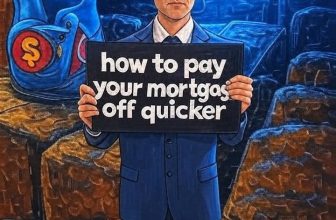(October 30, 2024)
TWO YEAR TENURE
For example, if you worked as a salaried welder for ABC Corp with regular source deductions and benefits (CPP, EI), your accountant might suggest that contracting yourself out to your current employer could yield higher (take-home) income. This kind of transition is typical in many professions, and the standard two-year tenure requirement is often reduced to one year or, in some cases, as little as six months. The same flexibility often applies to a professional engineer who may have shifted from corporate employment to self-employment as a contractor.
On the other hand, if you’ve moved to self-employment in a field where you have no prior experience, lenders are unlikely to relax the two-year tenure requirement.
Minimum Down Payment when qualifying with T1 Generals: 5% - 10%
Why is this significant to lenders? If you have tax arrears, the Canada Customs and Revenue Agency (CCRA) could place a lien on your property, which disrupts the lender’s risk position. In this case, the CCRA’s claim on the property would take priority, relegating the lender’s claim to a secondary position. If foreclosure becomes necessary, there may not be enough proceeds to fully cover the mortgage balance after satisfying the CCRA’s claim. For this reason, lenders are strict about ensuring that self-employed applicants have no outstanding taxes when qualifying for a mortgage. Minimum Down Payment when qualifying with NOAs: 5% – 10%
In this case, if the income declared in your T1 General and Notice of Assessment isn’t sufficient to qualify for your mortgage, the lender will need to review your Business Financial Statements to account for the retained surplus. This is often where the complexity of self-employed mortgage qualification peaks. Business accounting strategies are often broad and sophisticated, and at times, too complex for lenders to readily interpret the surplus income. If this happens, be prepared to provide a more detailed explanation of your business finances.
At this stage, self-employed applicants may also realize that their tax strategies may limit their ability to qualify under standard lender income parameters. The remaining option may then be to seek alternative lenders who specialize in self-employed mortgages with simpler qualification guidelines. These lenders typically bypass the business financial analysis altogether, instead focusing on business bank statements. It’s important to note that these products often come with higher interest rates, and lender/broker fees generally start at 1%. Minimum Down Payment when qualifying with Business Financial Statements: 10% – 20%
In return for these relaxed guidelines, the applicant agrees to a higher interest rate. To balance this, alternative lenders often offer extended amortizations of up to 35 years and short terms of one to three years, giving applicants the opportunity to refinance with a traditional lender sooner. Minimum Down Payment when qualifying with 12-months Business Bank Statements: 20% – 35%
SUMMARY
The mortgage process as a self-employed individual may present unique challenges, however, it’s entirely achievable with the right preparation and understanding. By focusing on maintaining a solid two-year self-employment history and gathering the necessary income documentation, you can improve your chances of securing a mortgage. But also remember that lenders are often willing to be flexible with their guidelines, particularly for those transitioning within their profession. Whether you choose to pursue traditional lending options or explore alternative lenders, being informed about the various qualification pathways will help set the expectation when you embark upon the mortgage qualification.
Are you self employed and in need of a mortgage? Call or text Marko Gelo right now at 604-800-9593, or Click Here to schedule a free, no-obligation phone call with Marko. You can also call Marko on WhatsApp.
Download my amazing Mortgage App…it’s loaded with calculators and tonnes of useful information!
Don’t want to miss out on the next blog post? Click Here to have future issues emailed directly to your inbox!
Contact Marko, he’s a Mortgage Broker!
604-800-9593 cell/text | Vancouver (Click Here to schedule a call with Marko!)
403-606-3751 cell only | Calgary (Click Here to schedule a call with Marko!)
Download my award-winning Mortgage App on your phone
Email: gelo.m@mortgagecentre.com






